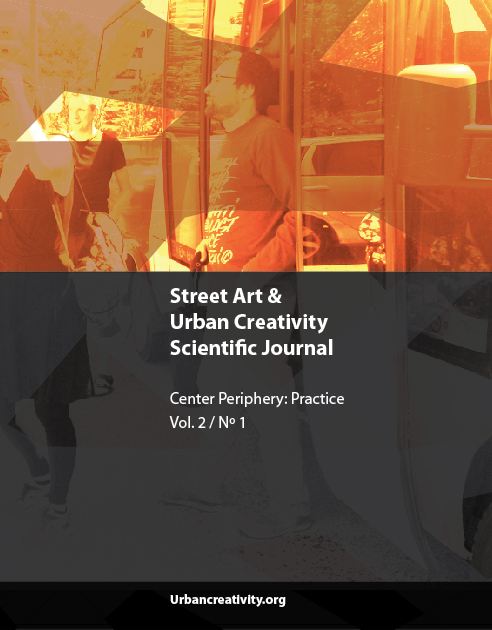Passing Through Walls:
The transfiguration and circulation of graffiti from East Timor
DOI:
https://doi.org/10.25765/sauc.v2i1.40Keywords:
Graffiti, street art, post conflict, hidden transcripts, East Timor, alternative modernitiesAbstract
This paper outlines an assemblage of ideas developing a broader understanding of graffiti from East Timor. Addressing concerns of the center and the periphery, theory and practice as encountered in the study of graffiti in East Timor, the paper draws from James C Scott’s concept of hidden transcripts to illustrate the nuanced notions of identity and resistance in the country’s graffiti and the unique interface of its existence located across both the public and private sphere. In this way, graffiti in East Timor demonstrates, both in the face of and in the life led beyond domination, an aesthetic nexus of resistance and recuperation where the “open interaction” and the “offstage” interaction of its sites portray the contest of its post-colonial and post-conflict context. The author’s practice-led research is included in the paper to illustrate how graffiti has spawned creative, cross-cultural collaborations that have passed through and beyond the country’s walls, demonstrating characteristic features of alternative modernities; transfiguration and circulation. Capturing the resonance of research developed through the author’s publication, Peace of Wall: Street Art from East Timor and Animatism, a collective of artists and curators from Australia, East Timor and Indonesia, founded by the author, is an approach to the topic of center and the periphery, theory and practice, indebted to Henri Lefebvre’s theory of Rhythmanalysis. Here, Rhythmanalysis presents a conceptual blueprint to mediate the author’s own temporal and spatial displacement in the act of writing about a 12 year time frame. A methodological approach behind the paper’s form is drawn from intertextuality. This concept scaffolds the author’s recognition of writing about graffiti as part of a larger creative practice where the subject matter determines the form of presenting knowledge. Theoretical motifs from graffiti and street art are presented through this paper’s form; an appropriation of reference points. What is presented, then, is what N. Katherine Hayles posits is ‘Work as Assemblage’, “a cluster of related texts that quote, comment upon, amplify, and remediate one another” (Hayles, 2003, p 278).
Downloads
Global Statistics ℹ️
|
155
Views
|
41
Downloads
|
|
196
Total
|
|
Downloads
Published
How to Cite
Issue
Section
License
Copyright (c) 2016 Street Art & Urban Creativity

This work is licensed under a Creative Commons Attribution-NoDerivatives 4.0 International License.
Those authors who publish in this journal accept the following terms:
-
Authors retain copyright.
-
Authors transfer to the journal the right of first publication. The journal also owns the publishing rights.
-
All published contents are governed by an Attribution-NoDerivatives 4.0 International License.
Access the informative version and legal text of the license. By virtue of this, third parties are allowed to use what is published as long as they mention the authorship of the work and the first publication in this journal. If you transform the material, you may not distribute the modified work. -
Authors may make other independent and additional contractual arrangements for non-exclusive distribution of the version of the article published in this journal (e.g., inclusion in an institutional repository or publication in a book) as long as they clearly indicate that the work was first published in this journal.
- Authors are allowed and recommended to publish their work on the Internet (for example on institutional and personal websites), following the publication of, and referencing the journal, as this could lead to constructive exchanges and a more extensive and quick circulation of published works (see The Effect of Open Access).













